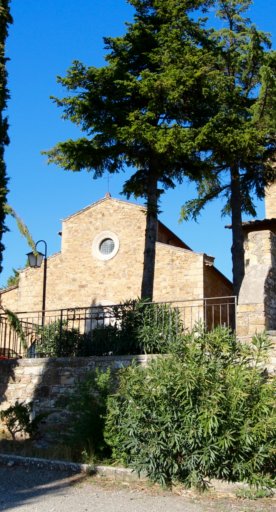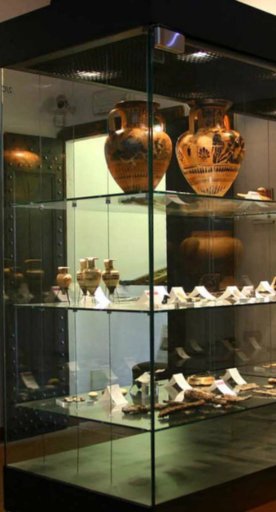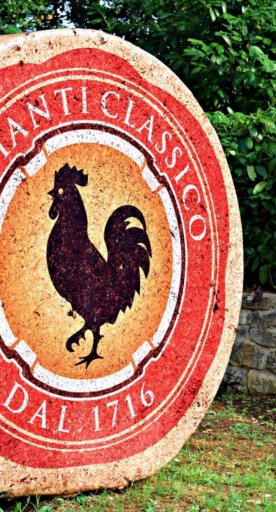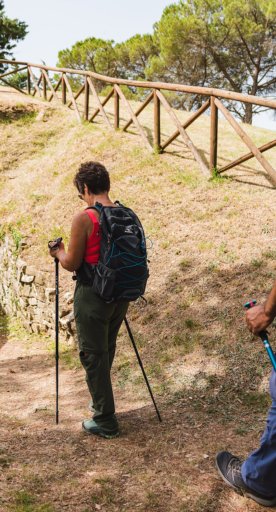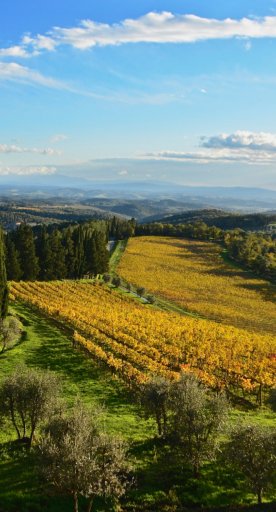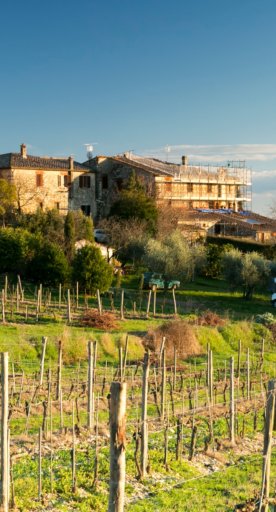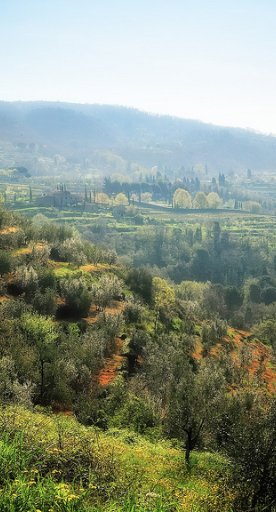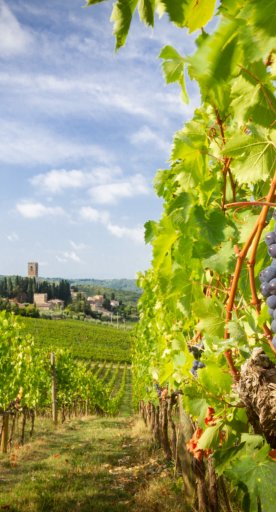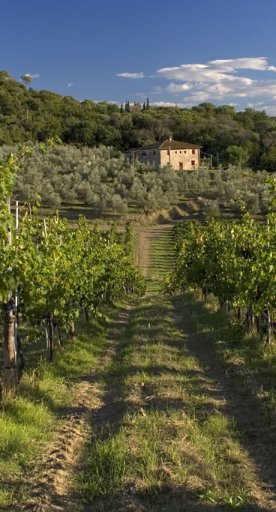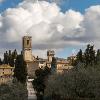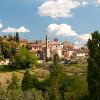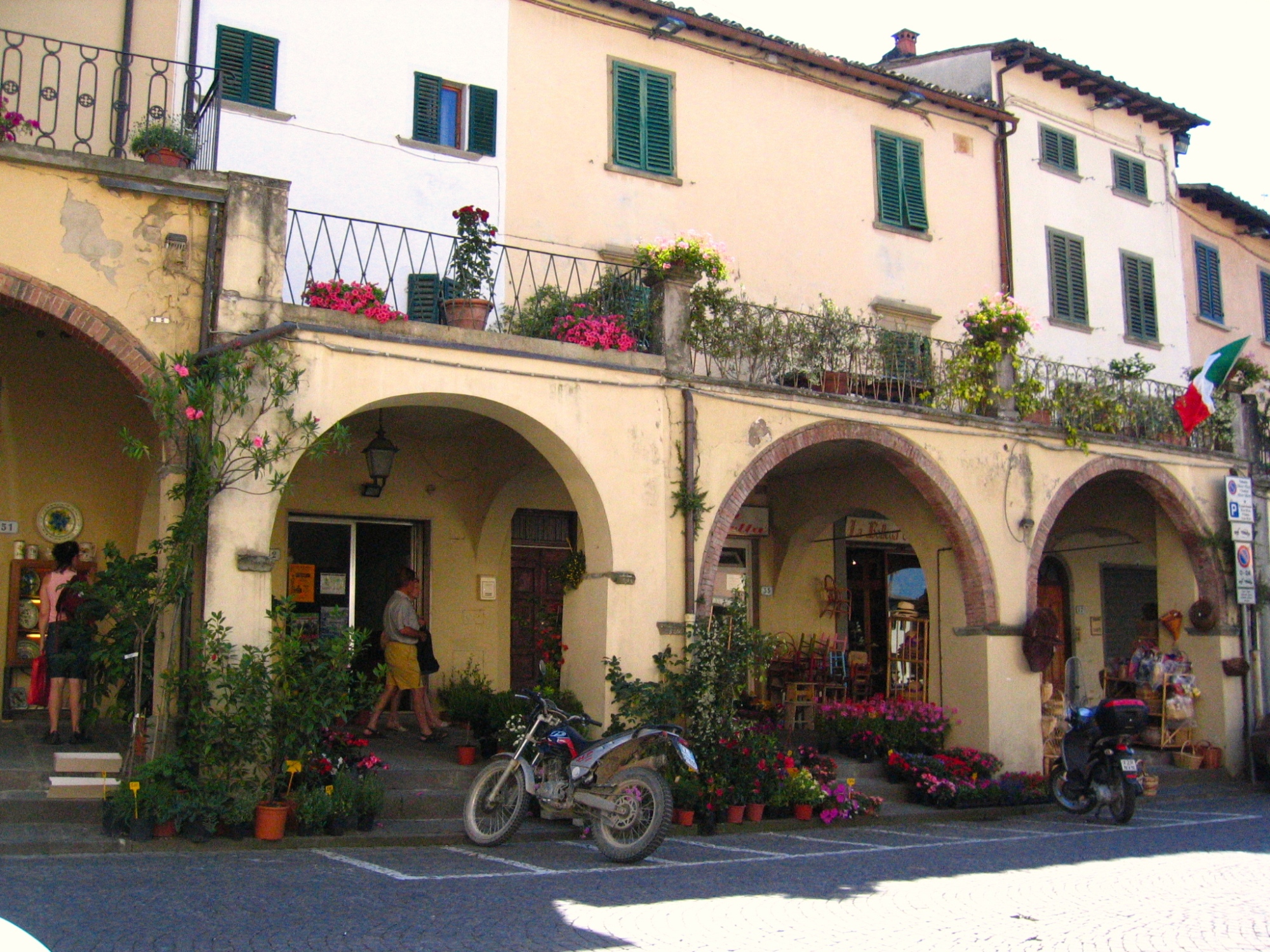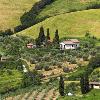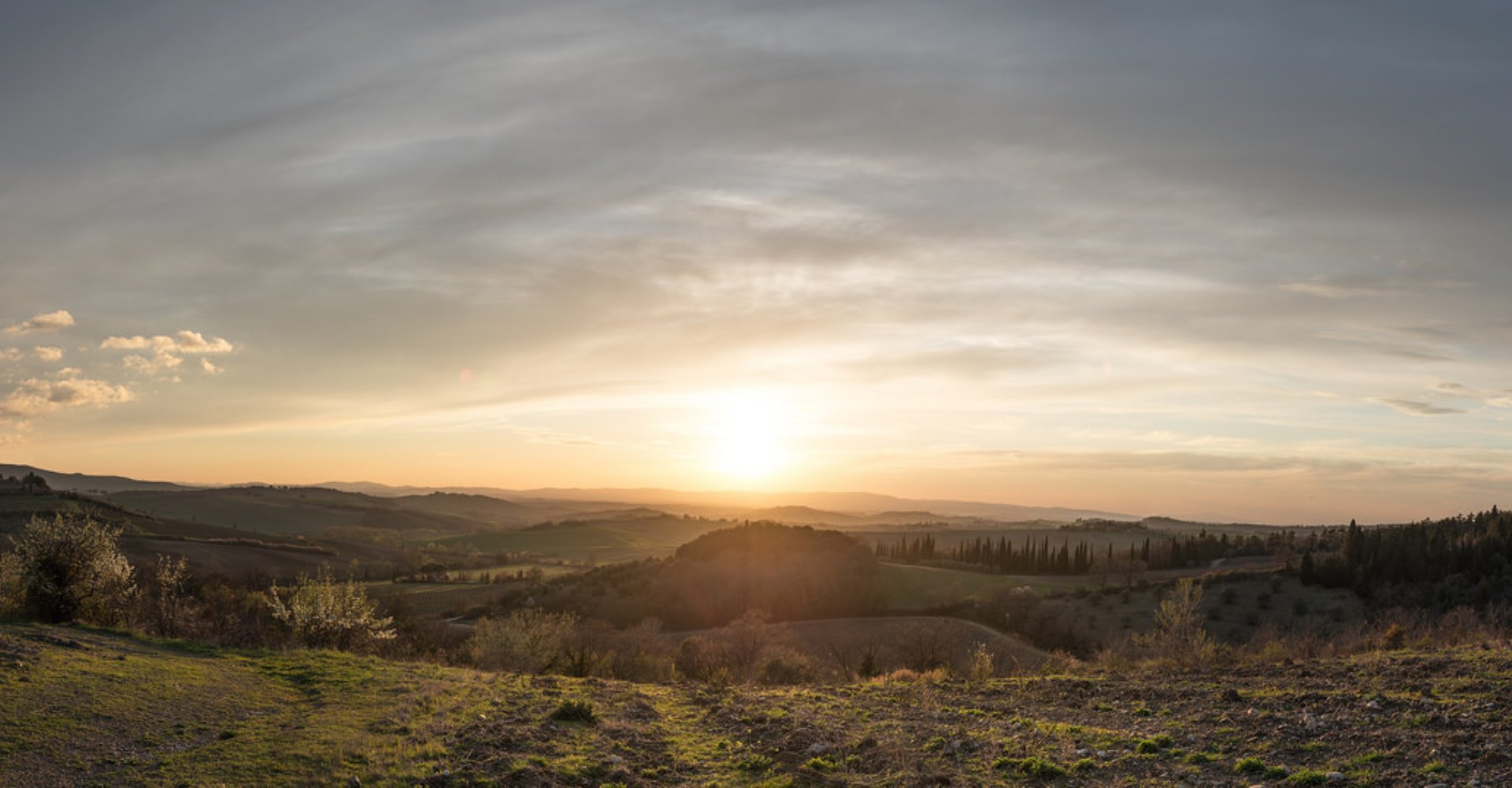
Castellina in Chianti
Gentle hills in the Chianti, hiding ancient traces of the Etruscans
Castellina in Chianti perches on a gentle arc of hills, radiating all the sweetness of the Chianti panorama. It first reveals itself to travellers as a series of patrician palazzos, which were built in the construction drives of various soldier-governors: initially these were the cronies of the Guidi counts, who had struck out from their Garfagnana homeland and pushed south into the heart of Tuscany, trying to bend it to their will through diplomacy. Later, the town was part of Florentine territory. Its centre is built around the old citadel, which was designed in the late 1400s by Giuliano da Sangallo. Walking down the via Ferruccio, you can still breathe something of Castellina's medieval atmosphere; and at the end of this street you will find the church of San Salvatore, which was destroyed in the Second World War and rebuilt in a neo-Romanesque style.
What to see in and around Castellina in Chianti
Strolling along Via Ferruccio, you can appreciate the ancient aura of Castellina in Chianti. And it is at the very end of this street that the San Salvatore Church is located, rebuilt in neo-Romanesque style following its destruction during World War II. The heart of the town is the ancient fortress designed in the second half of the 15ᵗʰ century by Giuliano da Sangallo. The imposing tower with a keep that looms over the village’s main square offers a striking view of the village and the Chianti mountains. Inside is the Archeological Museum in the Siena Chianti, an unmissable step in tracing the territory’s identity through the evidence of its earliest inhabitants.
Castellina in Chianti stretches across an area rich in woodlands and wildlife, but above all scattered with remnants of Etruscan civilization. Indeed, the numerous artifacts found in the area attest to human presence since the 7ᵗʰ century B.C., when this area was one of the points connecting the maritime Etruscan hubs (Vulci, Vetulonia and Roselle) and the northern towns, as well as to the Adriatic ports that linked the peninsula to the East.
Among the most important testimonies is the Montecalvario Tumulus, just outside the town. Formed of four tombs oriented to the cardinal points, the mound has been known since the 16ᵗʰ century and has consequently seen almost all of its grave goods dispersed and looted over the years. However, iron and bronze decorations belonging to a war chariot, now housed in the Archaeological Museum, were unearthed in 1915.
In the locality of Fonterutoli, you will find a delightful grove, inside which is kept the Etruscan Necropolis of Poggino, dated to the 6ᵗʰ century BC. There are five sepulchers, comprised of four chamber tombs and one ancient stone sarcophagus. The necropolis can be visited freely.
Finally, the Parish Church of Sant’Agnese in Chianti—within the Sant’Agnese Forest Nature Reserve—was largely rebuilt following damage sustained during World War II. All that remains of the medieval building is the base of the mighty bell tower (which originally most likely served as a defense tower). Inside is a work by Bicci di Lorenzo depicting a Madonna and Child with Saints.
Strolling along Via Ferruccio, you can appreciate the ancient aura of Castellina in Chianti. And it is at the very end of this street that the San Salvatore Church is located, rebuilt in neo-Romanesque style following its destruction during World War II. The heart of the town is the ancient fortress designed in the second half of the 15ᵗʰ century by Giuliano da Sangallo. The imposing tower with a keep that looms over the village’s main square offers a striking view of the village and the Chianti mountains. Inside is the Archeological Museum in the Siena Chianti, an unmissable step in tracing the territory’s identity through the evidence of its earliest inhabitants.
Castellina in Chianti stretches across an area rich in woodlands and wildlife, but above all scattered with remnants of Etruscan civilization. Indeed, the numerous artifacts found in the area attest to human presence since the 7ᵗʰ century B.C., when this area was one of the points connecting the maritime Etruscan hubs (Vulci, Vetulonia and Roselle) and the northern towns, as well as to the Adriatic ports that linked the peninsula to the East.
Among the most important testimonies is the Montecalvario Tumulus, just outside the town. Formed of four tombs oriented to the cardinal points, the mound has been known since the 16ᵗʰ century and has consequently seen almost all of its grave goods dispersed and looted over the years. However, iron and bronze decorations belonging to a war chariot, now housed in the Archaeological Museum, were unearthed in 1915.
In the locality of Fonterutoli, you will find a delightful grove, inside which is kept the Etruscan Necropolis of Poggino, dated to the 6ᵗʰ century BC. There are five sepulchers, comprised of four chamber tombs and one ancient stone sarcophagus. The necropolis can be visited freely.
Finally, the Parish Church of Sant’Agnese in Chianti—within the Sant’Agnese Forest Nature Reserve—was largely rebuilt following damage sustained during World War II. All that remains of the medieval building is the base of the mighty bell tower (which originally most likely served as a defense tower). Inside is a work by Bicci di Lorenzo depicting a Madonna and Child with Saints.
Nearby
Castellina nestles in a picture-postcard Chianti backdrop, iconic throughout the world for its green hills and extraordinary wines. Walking the Chiantigiana, the road that runs from Florence to Siena, is one way of stumbling upon the numerous agritourism farmstays and wineries that invite you to stop and sample the taste of the land.
One of the most beloved local towns is Greve in Chianti, with its unmistakable colonnaded square. A few miles from this lively centre you will find Montefioralle, a medieval castle that exerts an irresistible charm, ideal for a romantic walk for just for anyone who loves losing themselves among old alleyways. If, however, you dream of losing yourself in a sea of vineyards, you should head for Radda in Chianti and visit the forts and fortresses from times past.
Lastly, don't miss the Chianti Sculpture Park, which is full of artistic creations and installations that marry perfectly with their surrounding landscape.
Castellina nestles in a picture-postcard Chianti backdrop, iconic throughout the world for its green hills and extraordinary wines. Walking the Chiantigiana, the road that runs from Florence to Siena, is one way of stumbling upon the numerous agritourism farmstays and wineries that invite you to stop and sample the taste of the land.
One of the most beloved local towns is Greve in Chianti, with its unmistakable colonnaded square. A few miles from this lively centre you will find Montefioralle, a medieval castle that exerts an irresistible charm, ideal for a romantic walk for just for anyone who loves losing themselves among old alleyways. If, however, you dream of losing yourself in a sea of vineyards, you should head for Radda in Chianti and visit the forts and fortresses from times past.
Lastly, don't miss the Chianti Sculpture Park, which is full of artistic creations and installations that marry perfectly with their surrounding landscape.
Events
In summer, Castellina in Chianti is one of those towns that puts on Calici di Stelle (goblet of stars) around 10 August, to mark the night of San Lorenzo. Wine tastings and food samples are accompanied by moments of stargazing; the town streets fill with markets, concerts and other events, while the Archaeological Museum of the Sienese Chianti keeps its doors open to the public until late in the evening.
The Watermelon Festival is also celebrated in August, an event that started among Castellina's peasant community after the Second World War.
In summer, Castellina in Chianti is one of those towns that puts on Calici di Stelle (goblet of stars) around 10 August, to mark the night of San Lorenzo. Wine tastings and food samples are accompanied by moments of stargazing; the town streets fill with markets, concerts and other events, while the Archaeological Museum of the Sienese Chianti keeps its doors open to the public until late in the evening.
The Watermelon Festival is also celebrated in August, an event that started among Castellina's peasant community after the Second World War.
Typical Produce
The Chianti, as we know, is synonymous with good wine, whether Chianti DOCG or Chianti Classico DOCG. And now as always, a visit to Castellina is not complete without stopping at some of the many wine merchants or local wineries for a little tasting session, where the wine usually comes with a nice plate of Cinta Senese salami. The Chianti area also produces the magical Chianti Classico extra virgin olive oil DOP, which enriches any traditional dish, like ribollita or tripe, that you care to pour it over.
The Chianti, as we know, is synonymous with good wine, whether Chianti DOCG or Chianti Classico DOCG. And now as always, a visit to Castellina is not complete without stopping at some of the many wine merchants or local wineries for a little tasting session, where the wine usually comes with a nice plate of Cinta Senese salami. The Chianti area also produces the magical Chianti Classico extra virgin olive oil DOP, which enriches any traditional dish, like ribollita or tripe, that you care to pour it over.
What’s nearby?
Chianti

